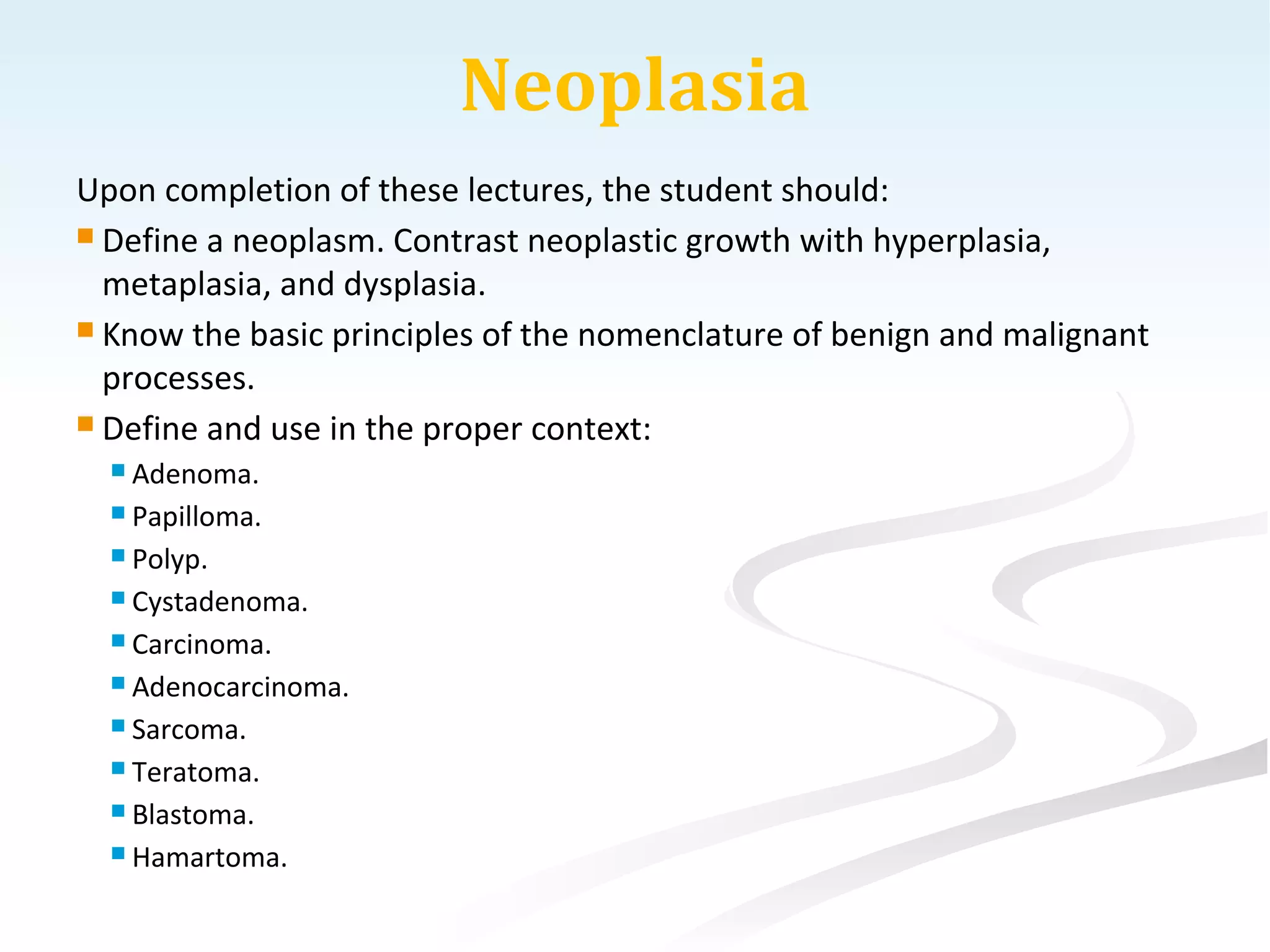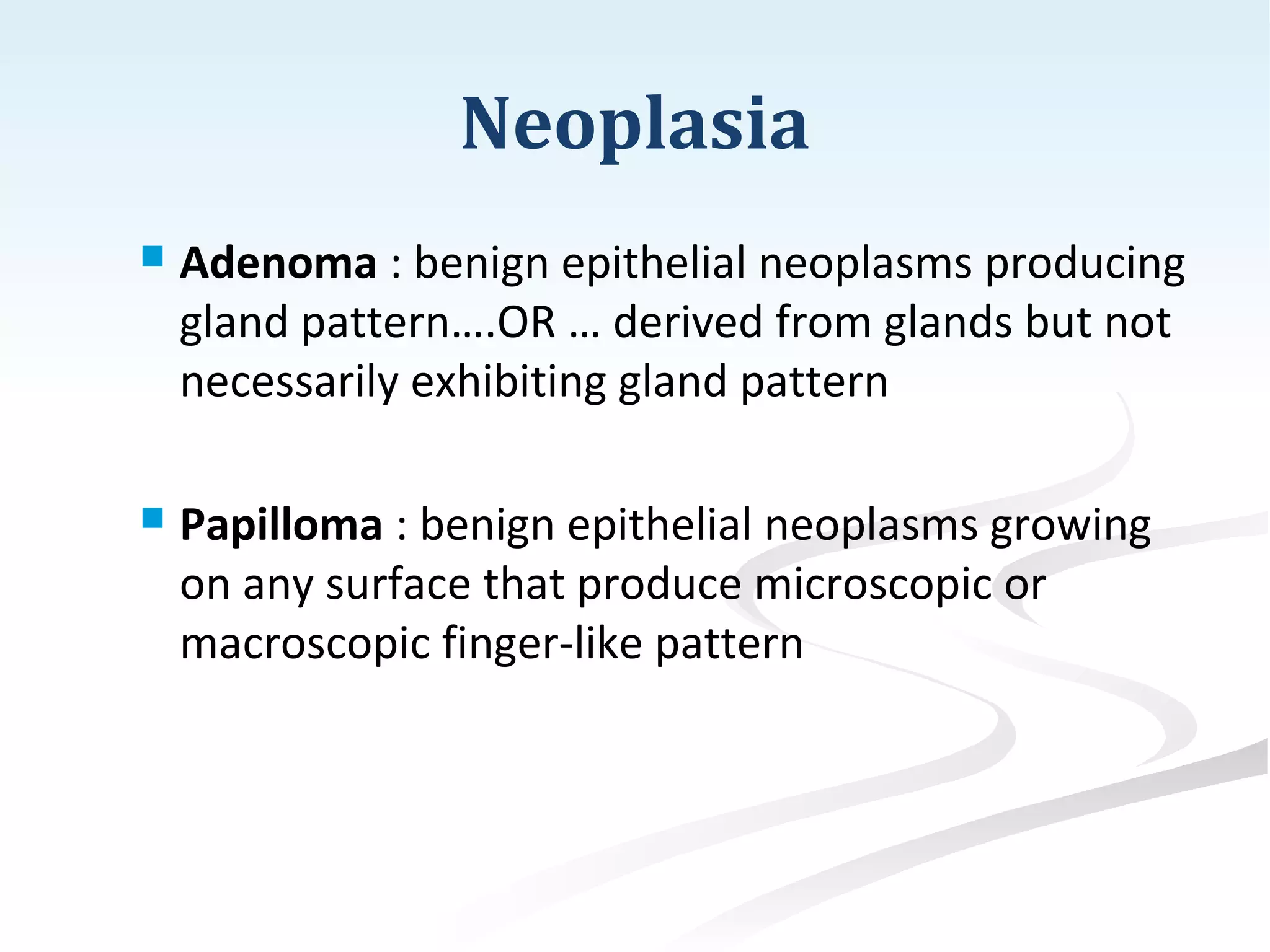This document discusses neoplasia and provides definitions and classifications of different types of tumors. Some key points include:
- Neoplasms can be classified as benign or malignant based on their ability to invade surrounding tissues and metastasize. Malignant tumors are less differentiated.
- Epithelial tumors are further classified based on cell of origin and growth pattern (e.g. adenoma, papilloma, polyp). Mesenchymal tumors are classified as sarcomas.
- Environmental and genetic factors can affect cancer risk and distribution. Cancer incidence generally increases with age. Certain inherited syndromes confer higher cancer susceptibility.
- Precancerous conditions like dysplasia are characterized by cellular






























































































